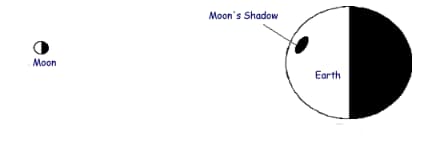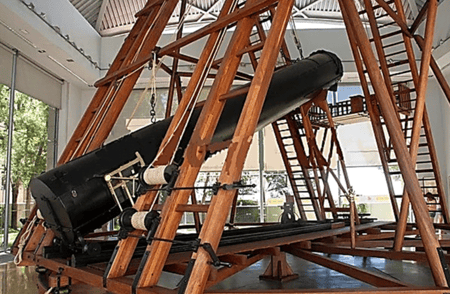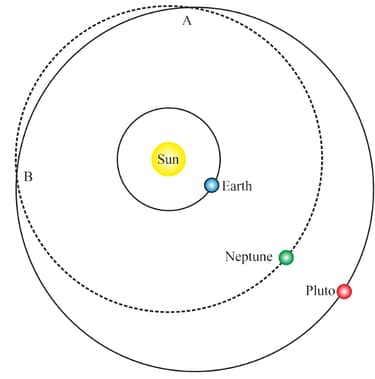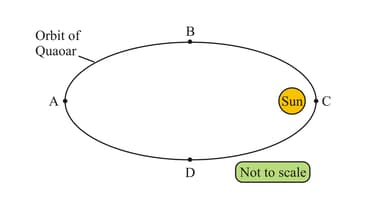Embibe Experts Solutions for Chapter: Stars and the Solar System, Exercise 1: Exercise
Embibe Experts Science Solutions for Exercise - Embibe Experts Solutions for Chapter: Stars and the Solar System, Exercise 1: Exercise
Attempt the free practice questions on Chapter 17: Stars and the Solar System, Exercise 1: Exercise with hints and solutions to strengthen your understanding. THINK ABOVE AND BEYOND SCIENCE PRACTICE BOOKS solutions are prepared by Experienced Embibe Experts.
Questions from Embibe Experts Solutions for Chapter: Stars and the Solar System, Exercise 1: Exercise with Hints & Solutions
A solar eclipse occurs when the moon comes between the sun and the earth. During a solar eclipse, the sun would be completely blocked in some parts of the world. On 7th May 2003, Mercury came between the sun and the earth. The sun could be seen from everywhere unlike during a solar eclipse due to the moon. Why?
The bar chart shows the force of gravity on eight of the planets.

i. The gravity on Neptune is . On the chart above, draw a bar for the planet Neptune.
ii. Give the name of a planet where you would weigh more than you weigh on Earth.
On 11th August 1999 there was a partial eclipse visible from India. The shadow of the Moon passed over part of the Earth. The diagram below shows the Moon, the Moon's shadow and the Earth. On the diagram, draw an arrow pointing towards where the Sun must be.

Until 1781 scientists thought there were only six planets in the solar system. Then a scientist called Herschel looked through a very large telescope that could turn to follow objects in space. He watched a bright object in the night sky for a few months and made drawings of what he saw. He concluded it was a planet.

(a) Scientists today use satellites as well as telescopes to observe the universe. Suggest one way that developments in equipment have changed the information scientists collect about planets.
(b) Before 1781, scientists believed there were 6 planets in our solar system. Now scientists believe there are 8 planets. What causes scientists to reject an idea and replace it with a new one?
The diagram below shows the orbits of Neptune, Pluto and the Earth. At two points, A and B, the orbits of Neptune and Pluto cross over each other.

(a) What force keeps planets in orbit around the Sun?
(b) Give two reasons why it takes Pluto more time than Neptune to orbit the Sun.
In 2002 a large asteroid was discovered orbiting the Sun. It was named Quaoar. The diagram below shows Quaoar in four positions in its orbit.

In which of the four positions, A, B, C or D, is the effect of the Sun's gravity on Quaoar the greatest? On the diagram above, draw arrows to show the direction of the Sun's gravity on Quaoar in each of the positions A, B, C and D.
The table below gives information about three of the planets in our solar system.
|
Planet |
Average distance from Sun (millions of km) |
Time for one orbit (Earth years) |
Average surface temperature of the planet (ºC) |
|
Saturn |
1427 |
30 |
–180 |
|
Uranus |
2870 |
84 |
–210 |
|
Pluto* |
5900 |
248 |
–230 |
How does the surface temperature of these planets vary with distance from the Sun? Explain why the temperature varies with distance from the Sun in this way.
* Pluto has been demoted and is no longer a planet - but when this question was written it was classed as a planet.
